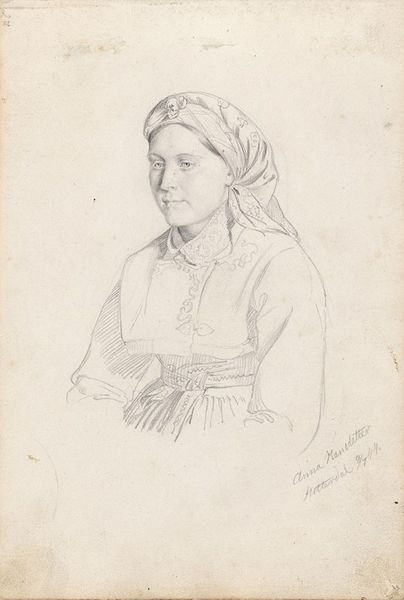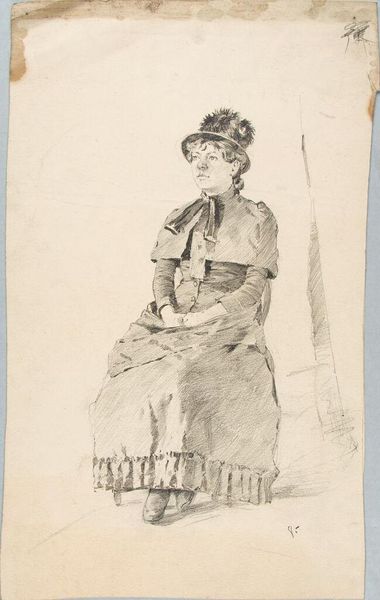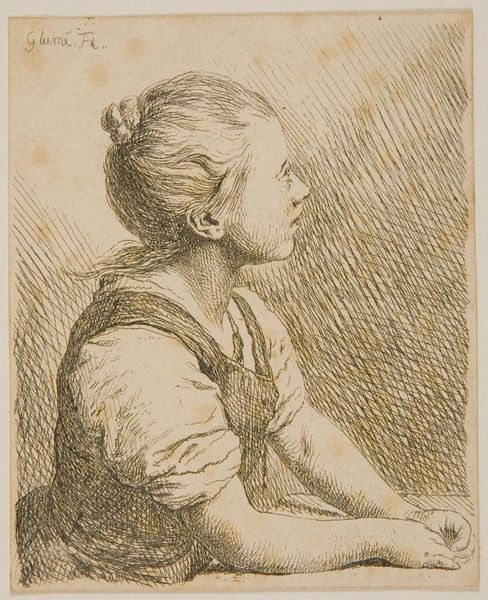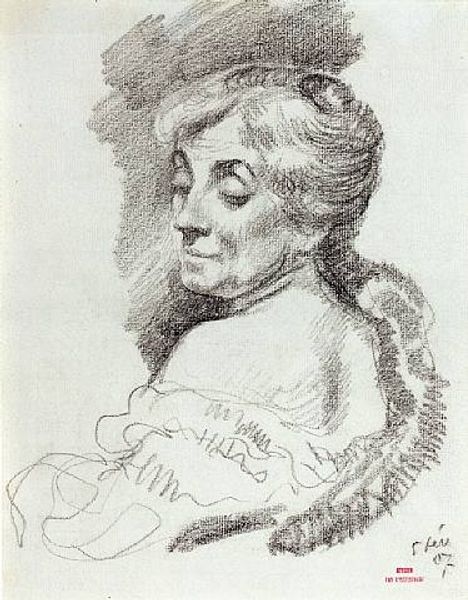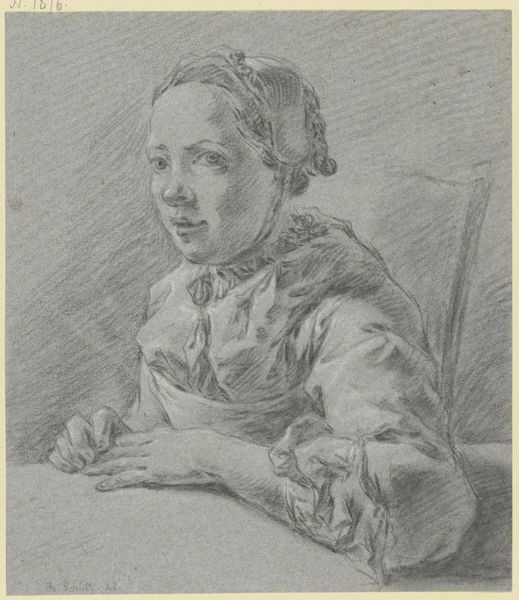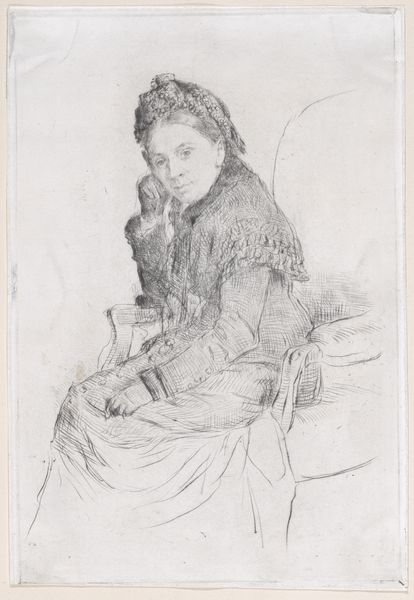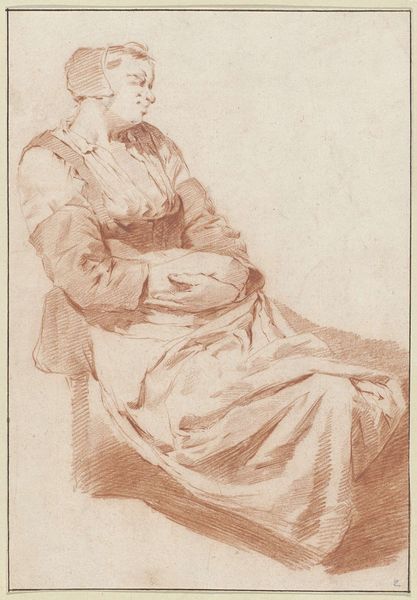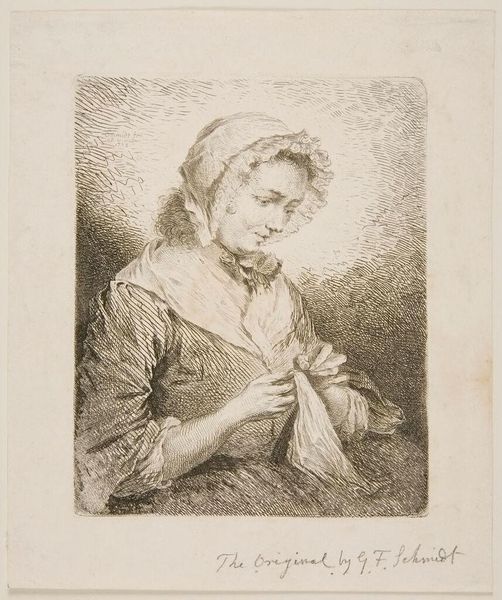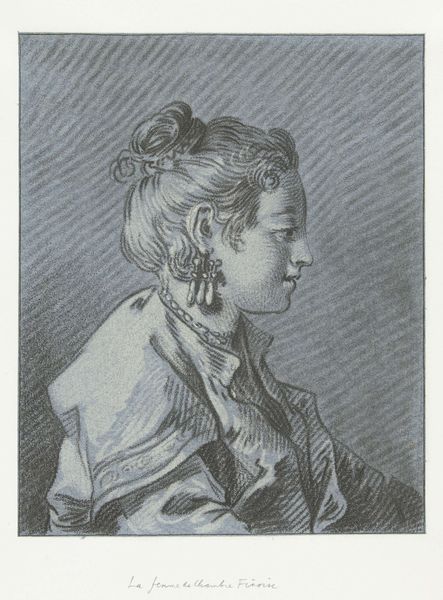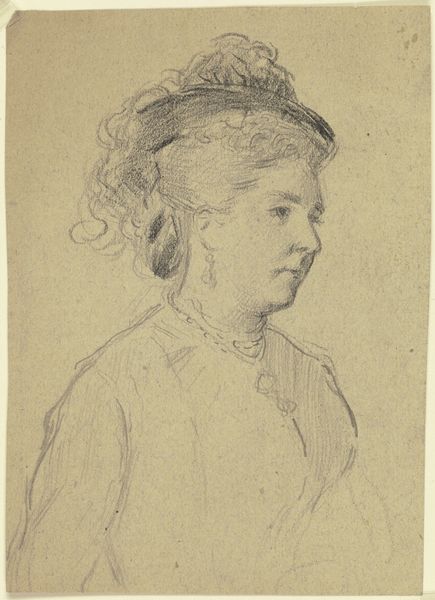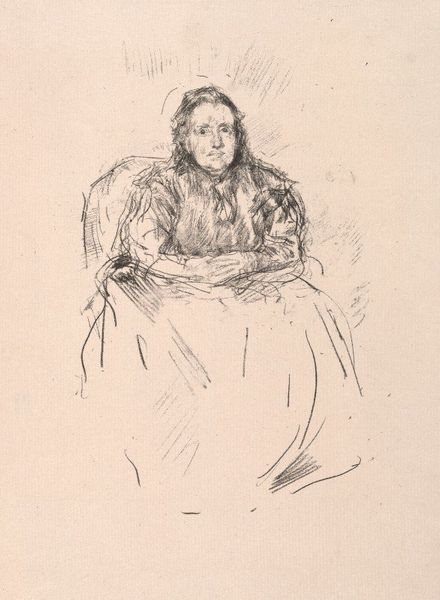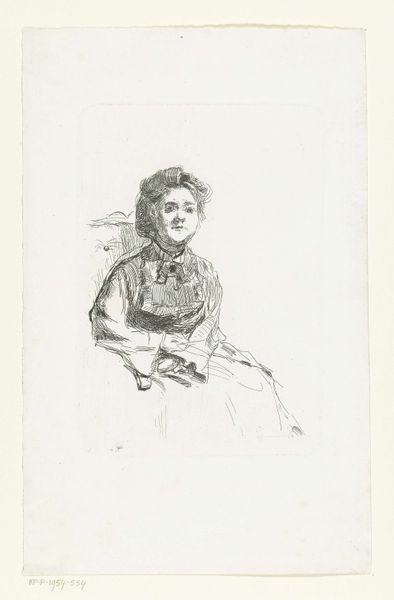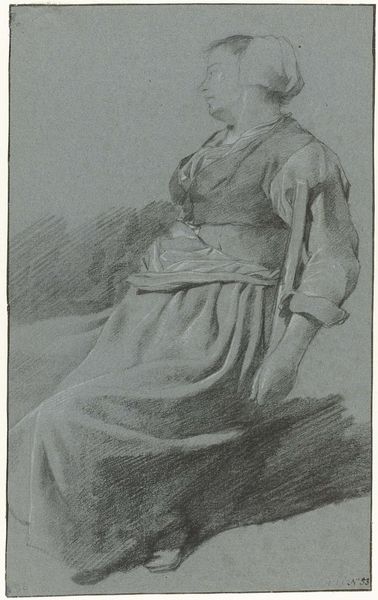
drawing, print, etching
#
portrait
#
drawing
# print
#
etching
#
figuration
#
romanticism
#
portrait drawing
Dimensions: 16.5 x 22.2 cm
Copyright: Public domain
James Tissot etched this 'Portrait of Woman' in the 19th century, using a metal plate and acid to create the delicate lines you see here. The etching process allows for a remarkable level of detail, evident in the intricate rendering of the woman’s hair and the folds of her ruffled clothing. Tissot, a painter who also excelled in printmaking, would have coated a copper plate with wax, drawn his image through the wax, and then submerged the plate in acid. This process bites away at the exposed metal, leaving incised lines that hold ink. The printmaker would then use a press to transfer the ink onto paper, creating the final image. The beauty of etching lies in its ability to capture subtle tonal variations and textures. Look closely, and you can see how Tissot uses cross-hatching to create a sense of depth and volume, bringing the woman to life on the page. Understanding this process allows us to appreciate not only the artist's skill, but also the labor involved in creating this intimate portrait. It's a potent reminder that art is as much about the making as it is about the image itself.
Comments
No comments
Be the first to comment and join the conversation on the ultimate creative platform.
